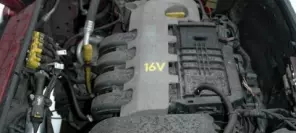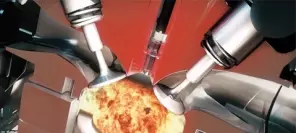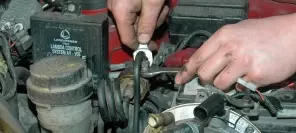- Main page
- Search
- Up to date
- Products
- Technology
- Vehicles
- Video
- Conversion Payback Simulator
Port Injection - Conversion Payback Simulator
Direct Injection - Conversion Payback Simulator
Diesel - Newsletter
An autogas-powered car and the winter
 loading results...
loading results...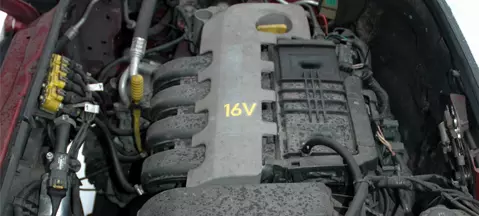
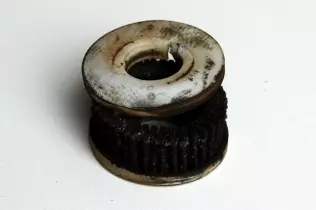 fot. gazeo.plThis is what an extremely worn-out liquid state LPG filter looks like. Avoid your to become similar!
fot. gazeo.plThis is what an extremely worn-out liquid state LPG filter looks like. Avoid your to become similar!The autogas system as such
Maintenance starts with replacing refill inserts of the liquid and gaseous state filters. The former is responsible for trapping solid contaminants and is used on all LPG systems (regardless of their generation), the latter (found only on 4th generation sequential autogas injection systems) – for oily ones. Replacing filters regularly protects the fuel system from contaminants build-up, which is particularly true for oily fractions contained in autogas and originating from LPG pumps used in the fuel's production and transportation processes.
Oily contaminants solidify in the winter and may lead to injector malfunctions, but may also affect reducers, so the latter should be regularly dismantled and cleaned. Reducers used on 1st and
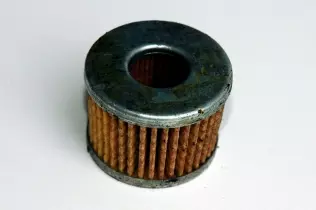 fot. gazeo.plA worn-out gaseous state LPG filter will cause oily contaminants to deposit in the injector rail, over time leading to malfunctions
fot. gazeo.plA worn-out gaseous state LPG filter will cause oily contaminants to deposit in the injector rail, over time leading to malfunctions
2nd generation systems have special drain plugs, allowing to dispose of the heavy oil deposited inside. For best results, draining should be performed when the engine is hot (but not working at the moment), as the contaminants get liquefied and drip easier. High levels of oily deposits may cause the reducer to malfunction, especially at sub-zero temperatures.
The autogas system's wiring
An autogas system's electrical circuit load is caused primarily by the system's electromagnetic valves (electrovalves). Depending on the type of reducer used, there may be 2 or 3 of these. They remain open thanks to voltage supplied by the car's electrical system, so proper condition of the autogas system's wiring and connectors is crucial. This is particularly important in the winter, as
 fot. gazeo.plThe condition of an autogas system's electrical wiring affects the system's performance in the winter
fot. gazeo.plThe condition of an autogas system's electrical wiring affects the system's performance in the winter
ambient conditions may cause contact problems (since connectors are not always airtight). Be sure to inspect the wires as well for insulation or breakage issues. Wiring defects or connector contact problems may cause voltage deficits at electrovalves – they will remain closed and the engine will not switch over to LPG. In the latest autogas systems, wiring harnesses are designed to be insensitive (or at least very little sensitive) to ambient conditions. All connectors are airtight, so contact issues are few and far between.
The car's bodywork
Converting a car to run on LPG means perforating the bodywork in a certain number of places in order to facilitate fixing autogas components and ventilation of the LPG tank's fittings. These additional holes should be inspected for rust
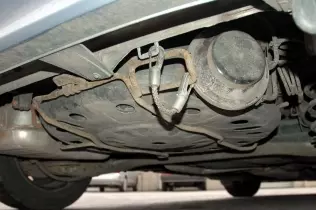 fot. gazeo.plCheck the underbody for rust protection as it is particularly prone to corrosion in the winter
fot. gazeo.plCheck the underbody for rust protection as it is particularly prone to corrosion in the winterprotection condition before the winter, as they might become corrosion centres if neglected. It becomes particularly important in the winter as saline solutions (strong corrosion catalysers) are used during that time to keep the roads clear of snow.
Once you get under the car to inspect it, pay attention to the connection of LPG fuel line fixings. In the winter, elements under the chassis often come into contact with snow or mud and if the fuel lines are not properly fixed, they may break away.
To sum up
By doing all the maintenance required for an autogas-powered car before the winter kicks in, you get a guarantee that the entire system will function correctly. Regular filter replacement is absolutely vital for it protects the injector rail and the reducer from heavy oil contamination. And if those components work properly, the engine performs well regardless of weather conditions and its fuel consumption is optimal.


